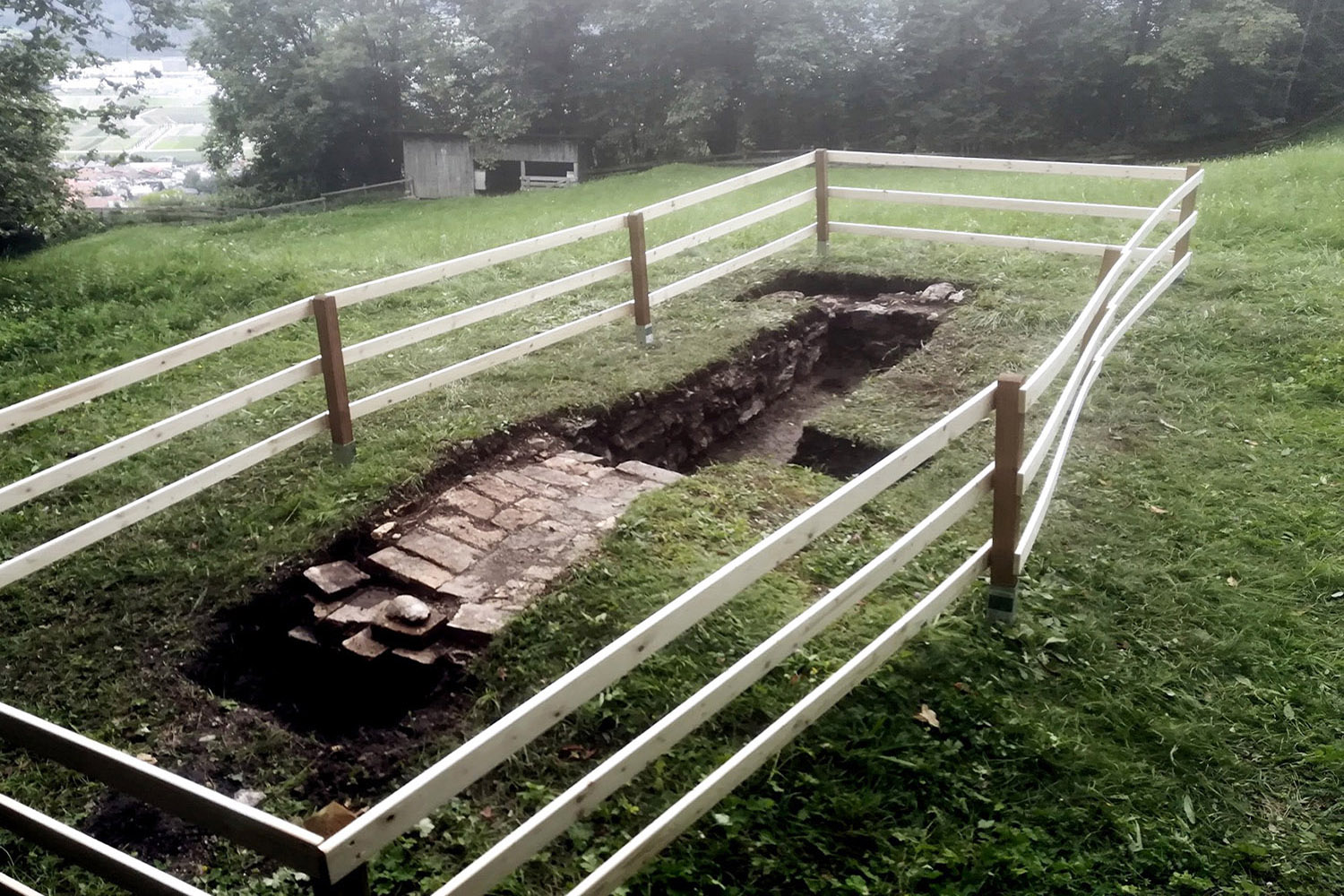
Lvise of Savoyen
Solo exhibition
Thaur & Archaeological Museum Innsbruck, AUT, 2019 - 2022
Funded by KOER Tirol as part of MAX 500
Excavation site: at
Thaur, Tyrol, Austria (in collaboration with Chronos, Association for Village History), 2019
Exhibition views at Archaeological Museum Innsbruck, AUT, 2022
The project "Lvise of Savoyen" aims to design, produce and make accessible to the public the excavation and the artworks found in the process of the "Collection Lvise of Savoy" from the former possession of Emperor Maximilian I.
The project deals with questions of authenticity, authorship and veracity in art and art history. Furthermore, it deals with the question of how contemporary art deals with historical styles and current interpretations of this history.
In October 2020, remains of an art collection dating back to the end of the 15th century are discovered in Thaur near Innsbruck (AT). According to an analysis, the excavated objects are documents and elements of the "Lvise von Savoyen Collection", believed to be lost.
The documents found, purchased and collected by the Emperor Maximilian I, Holy Roman Emperor, known as a patron of the arts, come from the work of the group of artists "Cavalleria Gialli Dell'Assenza", whose members came from Italy and France, and who were hardly noticed in the history of art.
The project deals with questions of authenticity, authorship and veracity in art and art history. Furthermore, it deals with the question of how contemporary art deals with historical styles and current interpretations of this history.
In October 2020, remains of an art collection dating back to the end of the 15th century are discovered in Thaur near Innsbruck (AT). According to an analysis, the excavated objects are documents and elements of the "Lvise von Savoyen Collection", believed to be lost.
The documents found, purchased and collected by the Emperor Maximilian I, Holy Roman Emperor, known as a patron of the arts, come from the work of the group of artists "Cavalleria Gialli Dell'Assenza", whose members came from Italy and France, and who were hardly noticed in the history of art.
